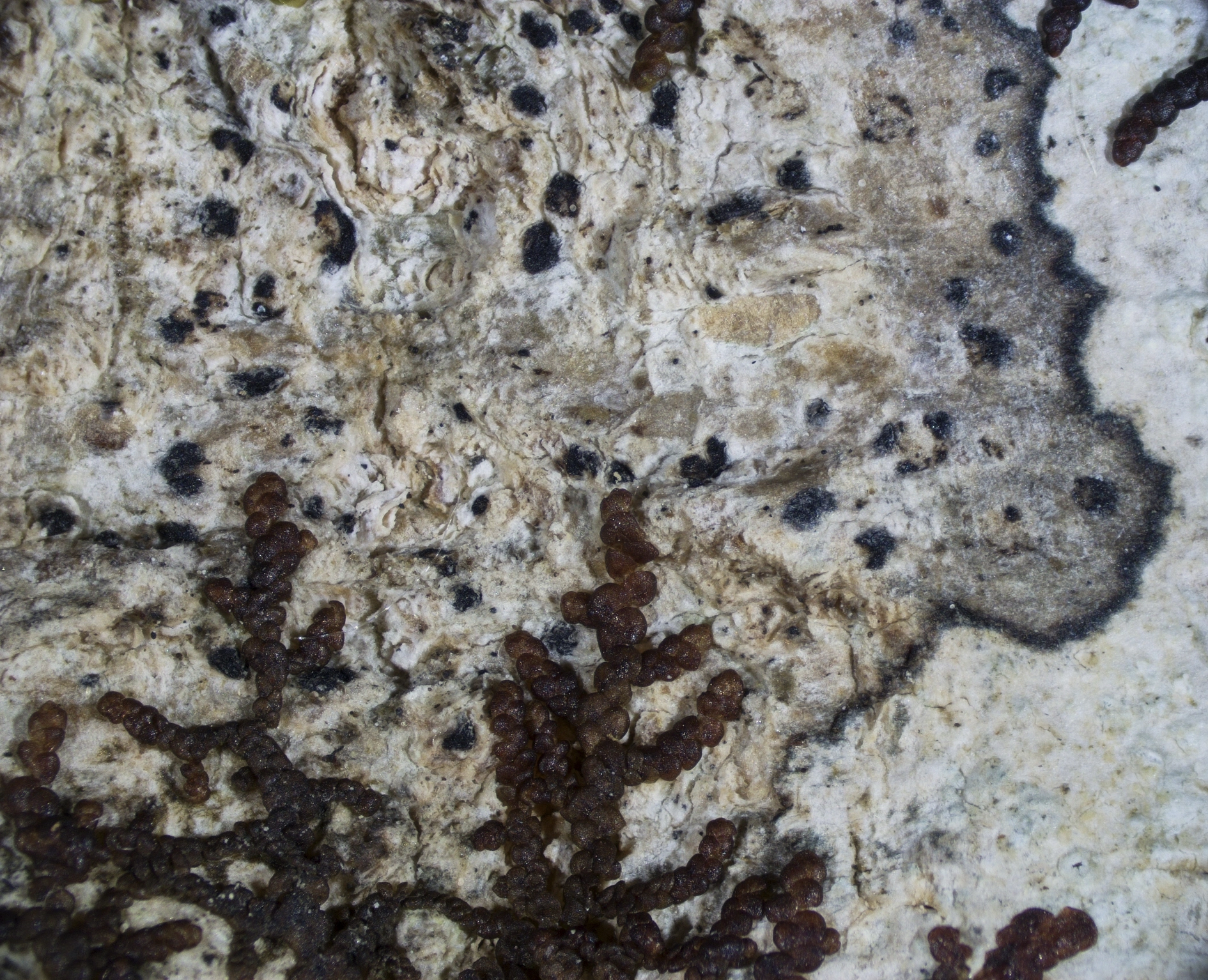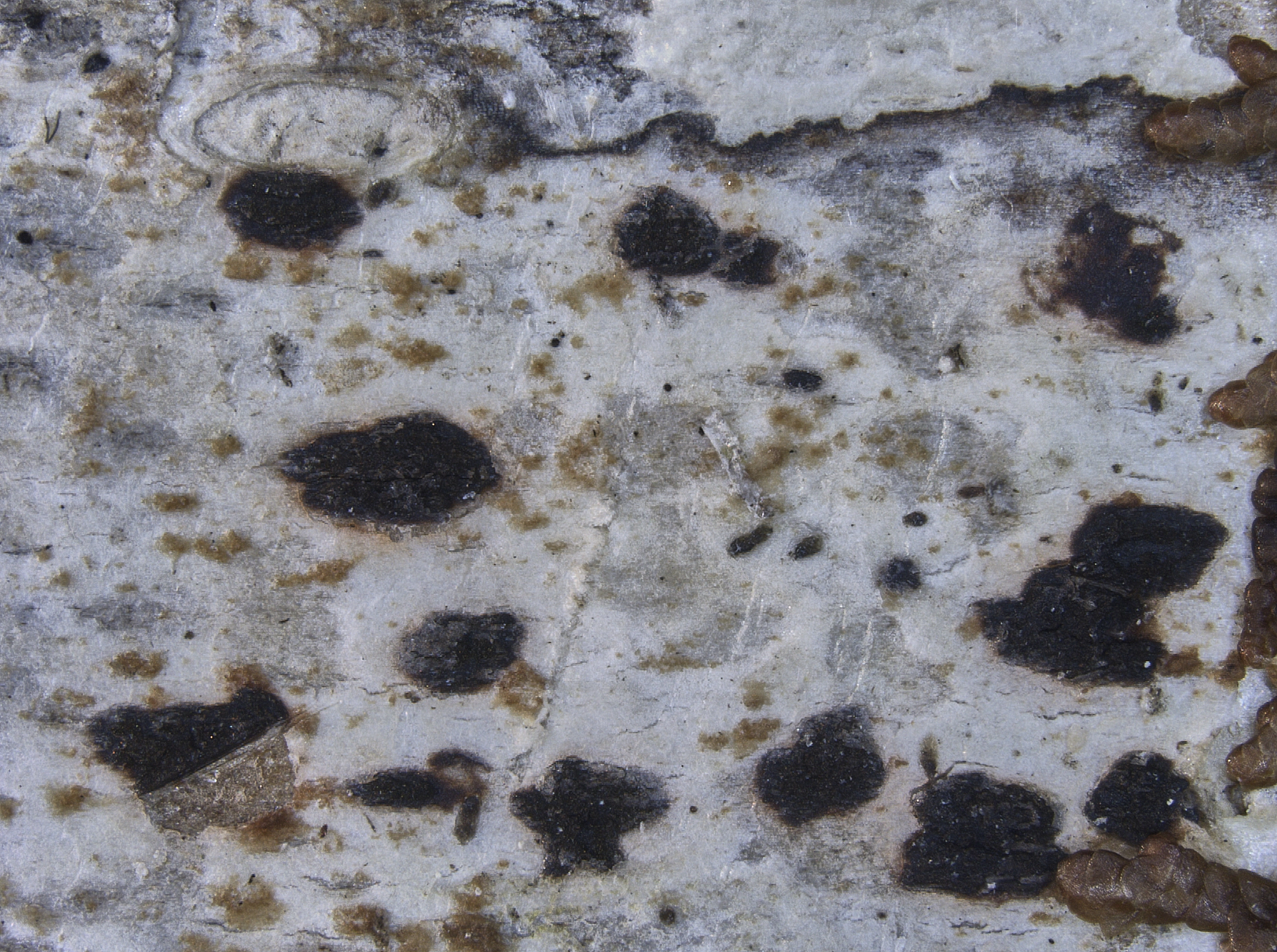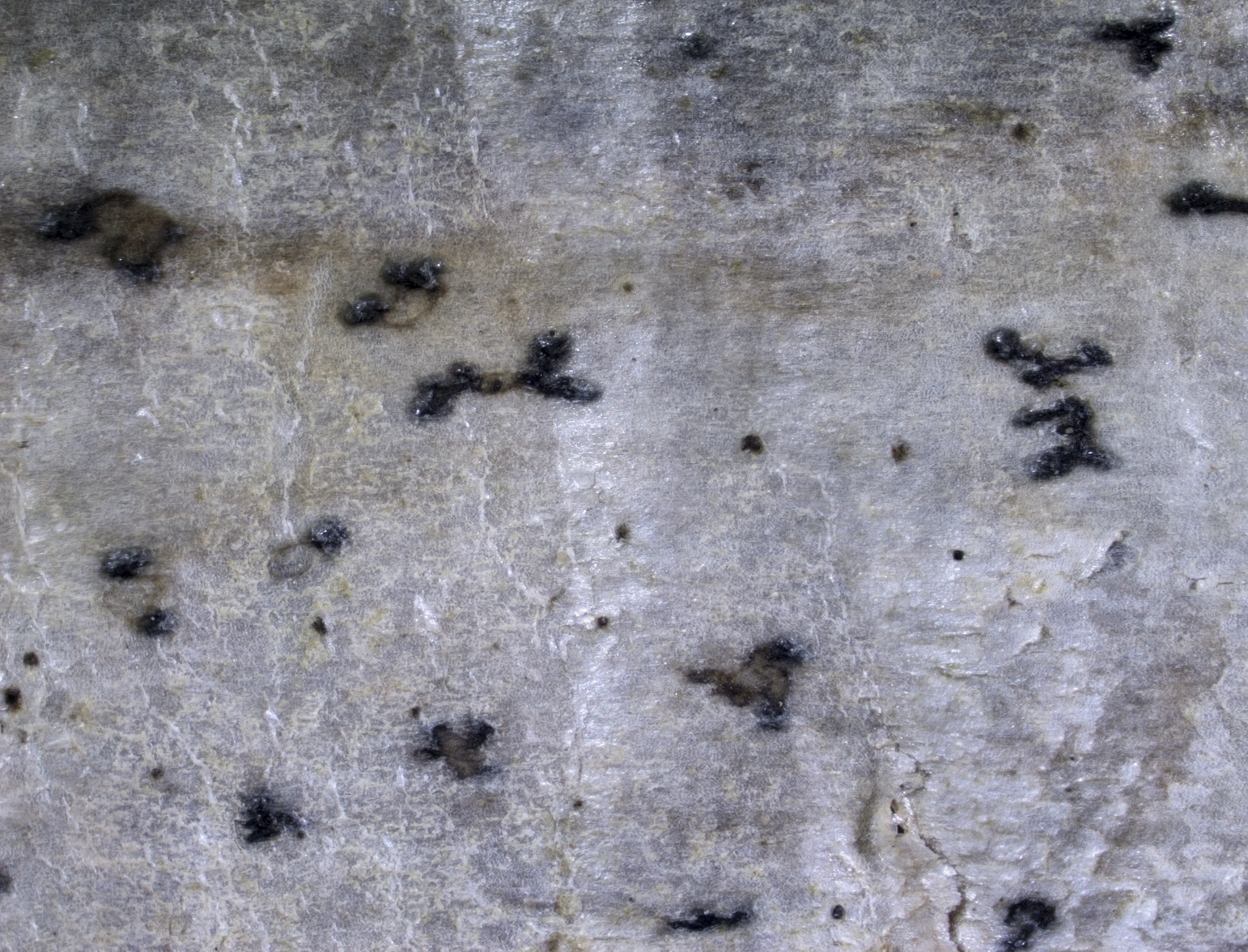Arthothelium
Arthothelium is a heterogeneous genus consisting of approximately 50 species worldwide. Seven of these species have been found in Norway. The genus is lichenized with a trentepohlioid photobiont or non-lichenized. In its traditional definition, Arthothelium differs from Arthonia species by muriform versus transversely septate spores.
- Innhold
- Description
- Ecology
- Remarks
Description
Thallus
The Norwegian Arthothelium species have an indistinct to thin but well-developed thallus. The color varies from whitish to pale grey, olive-grey, grey-brown or fawn. The surface is usually matt or weakly glossy. The margin is not determinate or delimited by a thin brown line when in contact with other lichens.
Fruitbodies
The apothecia are well-delimited and brownish black to black. They have a slight purplish hue in A. macounii. The apothecia are flat or slightly convex, and level with the thallus surface to raised. They are rounded to elongate or with a star-like branching in shape. In some species, the apothecia are disintegrating in the center.
A well-defined margin is absent.
The hymenium is unpigmented to pale brownish or greenish.
The epithecium is pale brown to dark brown. In A. macounii it is purplish brown.
The hypothecium varies from unpigmented to dark brown in coloration.
The asci are of the Arthothelium- or the Arthonia-type and contain 8 spores.
The spores are oblong to obovoid and submuriform to muriform. Some have an enlarged end-cell while others do not. The spores are persistently unpigmented or get a brown pigmentation and a granular ornamentation when old.
Anamorph
Pycnidia have been found in several species. They appear dark brown to black, ca 40–80 μm in diameter, and are immersed in the thallus. The wall is dark red-brown. The conidia are rod-shaped and 4–6 × 0.5–1 μm large.
Chemistry
The Norwegian Arthothelium species lack lichen secondary compounds in the thallus, however orange-red, K+ purple anthraquinone pigments are present in the fruitbodies of A. macounii. The hymenial gels react I+ red or blue, and KI+ blue. A KI+ blue ring structure in the tholus of the asci is present or absent.
The brown pigment in the wall of the pycnidia turns greenish in K solution.
Spore drawings, from left to right: Arthothelium norvegicum, Arthothelium dictyosorum, Arthothelium macounii and Arthothelium ruanum. The spores of Arthothelium dictyosporum are 30 µm long.
Ecology
Arthothelium has a worldwide distribution but is most diverse in tropical and subtropical regions of both hemispheres. Species of this genus prefer oceanic to suboceanic climatic conditions or habitats with a humid microclimate. Most Arthothelium species are epiphytes, but the genus further includes species growing on rock substrates and as lichenicolous taxa on other lichens.
The Norwegian species of Arthothelium are all epiphytes and usually grow on smooth bark of deciduous trees in more or less humid natural forests, riverine forests and woodlands. Species like A. dictyosporum, A. lirellans, A. norvegicum, and A. macounii are strictly oceanic in distribution and confined to the boreo-nemoral and boreal rainforest communities. One species, A. scandinavicum, preferably grows on spruce in boreal forests.
Remarks
Arthothelium as currently understood is heterogeneous and not clearly distinguished from the related genus Arthonia. For purely practical reasons, we here adopt the traditional definition of the genus that distinguishes Arthothelium from Arthonia by muriform instead of transversely septate spores. Both genera are expected to split in several natural units upon further revision, some of which will include species with both muriform and transversely-septate spores.
Literature
Cannon P, Ertz D, Frisch A, Aptroot A, Chambers S, Coppins BJ, Sanderson N, Simkin J and Wolseley P (2020). Arthoniales: Arthoniaceae. Revisions of British and Irish Lichens 1: 1–48.
Coppins BJ and Tønsberg T (1984). A new species of Arthothelium from Norway. Nordic Journal of Botany 4: 75–77.
Sundin R (1999). Phylogenetic and taxonomic studies within Arthonia Ach. (Ascomycetes, Arthoniales). Doctoral dissertation, Department of Bot., Stockholm University.
Sundin R and Tehler A (1998). Phylogenetic studies of the genus Arthonia. Lichenologist 30: 381–413.







